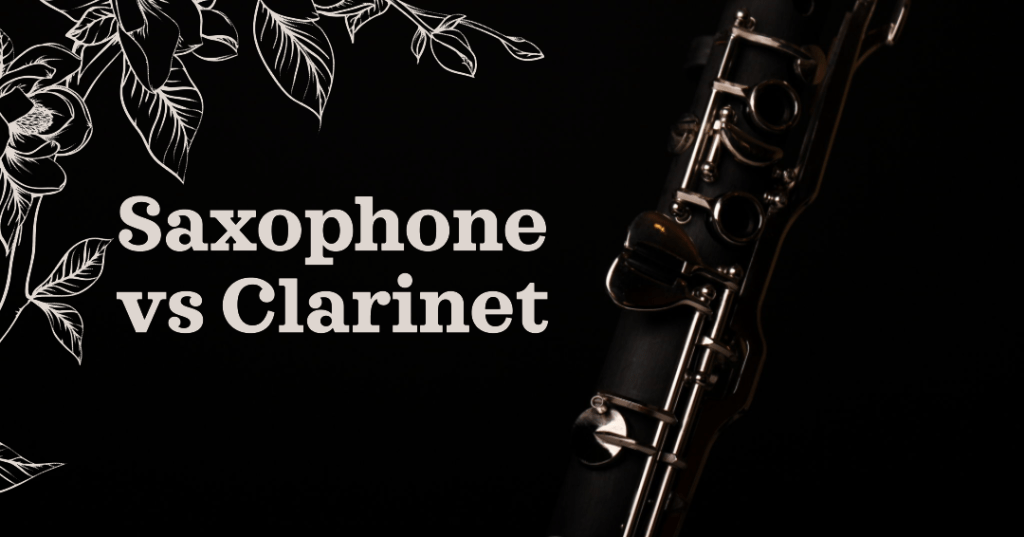Saxophone vs Clarinet: A Battle of Musical Giants
The saxophone and the clarinet, two iconic wind instruments, have long captivated musicians and audiences alike with their distinct sounds and virtuosic capabilities. While both share similarities in their appearance and playing techniques, they each possess their own unique characteristics that set them apart. In this article, we will delve into the world of the saxophone and clarinet, exploring their histories, musical styles, and notable players. So buckle up and get ready for a musical showdown like no other.

Here are five advantages of playing the saxophone over the clarinet in the present day
Versatility in Genres: The saxophone is highly versatile and fits well in various musical genres, including jazz, rock, pop, classical, and more. Its adaptability allows players to explore a wide range of musical styles.
Popularity in Contemporary Music: The saxophone continues to be a prominent instrument in contemporary music. It features prominently in pop, funk, and R&B, providing opportunities for players to engage with current musical trends.
Solo and Ensemble Opportunities: Saxophonists often have more opportunities for solo performances and are frequently featured in ensembles. The saxophone’s distinctive sound and ability to carry melodies make it a sought-after instrument for both soloists and ensemble players.
Expression and Dynamics: The saxophone offers a wide range of expressive possibilities. With the ability to play both softly and with great intensity, players can convey a wide range of emotions through their music.
Growing Community and Resources: The saxophone community is vibrant and continually growing. There are numerous online resources, forums, and communities where players can connect, share experiences, and access valuable educational materials. This supportive community can be a significant asset for players seeking to develop their skills and knowledge.
FAQ (Saxophone vs. Clarinet)
What are the key differences between a saxophone and a clarinet?
The main differences lie in their shape, sound production, and range. Saxophones have a conical shape and use a single reed to produce sound. They have a larger range than clarinets and are often used in various musical genres. Clarinets, on the other hand, have a cylindrical shape and use a single reed. They have a mellow tone and are commonly found in classical and jazz music.
Which instrument is easier to learn, the saxophone or the clarinet?
Both instruments have their own learning curves. Some beginners find the clarinet easier to start with due to its simpler fingerings. However, the saxophone may be more intuitive for some as it has a more direct mouthpiece and produces sound more easily. Ultimately, the ease of learning depends on individual preferences and learning styles.
Which instrument is more versatile in terms of musical genres?
The saxophone is known for its versatility and is used in a wide range of genres including jazz, rock, classical, and more. Clarinets are versatile as well but are particularly prominent in classical and traditional music. So, if you’re interested in exploring various genres, the saxophone offers a broader range of possibilities.
A Brief History of the Saxophone
Invented by the Belgian instrument maker Adolphe Sax in the 1840s, the saxophone was originally intended to fill the gap between the woodwind and brass sections. Adolphe Sax wanted to create an instrument that could combine the agility and expressiveness of woodwinds with the power and volume of brass instruments. His creation, the saxophone, quickly gained popularity and found its place in various musical genres, from classical and jazz to rock and pop.
From the majestic baritone saxophone to the soaring soprano saxophone, the saxophone family spans a wide range of sizes and pitches. Each member of the saxophone family plays a crucial role in different styles of music. For instance, the tenor saxophone is often associated with jazz and R&B, while the alto saxophone is commonly found in classical and pop music.
The Allure of the Clarinet
The clarinet, on the other hand, has a rich history dating back several centuries. Developed from earlier single-reed instruments, the modern clarinet emerged in the late 17th century and soon gained popularity in orchestral and chamber music settings. Its warm and expressive tone quickly captured the hearts of composers and musicians.
The clarinet’s versatility is evident in its various forms, including the Bb clarinet, the most commonly played type, as well as the bass clarinet and the smaller Eb clarinet. Each variant offers a distinct timbre, allowing players to explore a wide range of musical possibilities.
Musical Styles and Influences
When it comes to musical styles, both the saxophone and clarinet have left an indelible mark on the world of music.
Famous for its soulful and expressive nature, the saxophone has become synonymous with jazz. The legendary John Coltrane and Charlie Parker are just a few of the iconic saxophonists who revolutionized jazz improvisation and composition. Today, modern saxophonists continue to push the boundaries of the genre, incorporating elements of funk, fusion, and even hip-hop into their playing.
On the other hand, the clarinet has made significant contributions to classical music. The virtuosic clarinet solos in Mozart’s Clarinet Concerto and Copland’s Clarinet Concerto are often hailed as masterpieces. Additionally, the clarinet’s elegant sound can be heard in chamber music, symphonies, and even film scores. The incomparable Benny Goodman, known as the “King of Swing,” popularized the clarinet in the realm of jazz, showcasing its versatility in both traditional and swing styles.
Notable Saxophonists and Clarinetists
Through the years, countless saxophonists and clarinetists have emerged as trailblazers in their respective instruments. From the mesmerizing saxophone solos of Kenny G to the intricate clarinet runs of Artie Shaw, these musicians have left an undeniable impact on the music world.
Atlanta Saxophone Player is a prime example of a saxophonist who skillfully blends jazz, R&B, and funk to create a mesmerizing musical experience. His soul-stirring performances have earned him a dedicated following in the Atlanta music scene.
The Smartest Fortnite Player showcases the dexterity and agility of clarinetist performances in a different context. The intricate fingerwork and precise control required in playing clarinet are reminiscent of the strategic planning and quick reflexes of a skilled Fortnite player.
African Jazz is a genre that beautifully combines the rhythmic and melodic elements of African music with the improvisatory nature of jazz. Saxophone and clarinet have been central to the development of African Jazz, with their expressive capabilities bringing to life the rich cultural heritage of the continent.
Music Gigs offers a platform for both saxophonists and clarinetists to showcase their talents in live performances. From intimate jazz clubs to grand concert halls, these musicians captivate audiences with their soaring melodies and virtuosic solos.
Afrobeat Songs embraces the infectious rhythms and vibrant melodies of Afrobeat music, where saxophones and clarinets often take center stage. These songs blend elements of traditional African music, jazz, funk, and highlife, creating a mesmerizing fusion of genres.
The Choice is Yours
When it comes to choosing between the saxophone and clarinet, it ultimately boils down to personal preference and the desired musical style. The saxophone’s bold and expressive sound lends itself well to jazz, while the clarinet’s elegant and versatile nature shines in classical and swing music.
Whether you decide to embark on a passionate saxophone journey or embrace the allure of the clarinet, both instruments offer limitless possibilities for musical expression. So, pick up your instrument of choice, unleash your creativity, and embark on a musical adventure like no other.
References:







